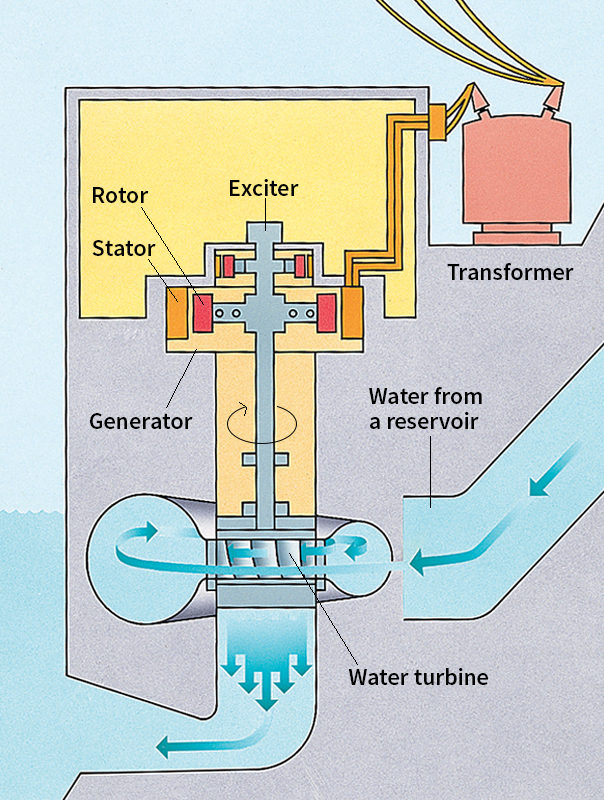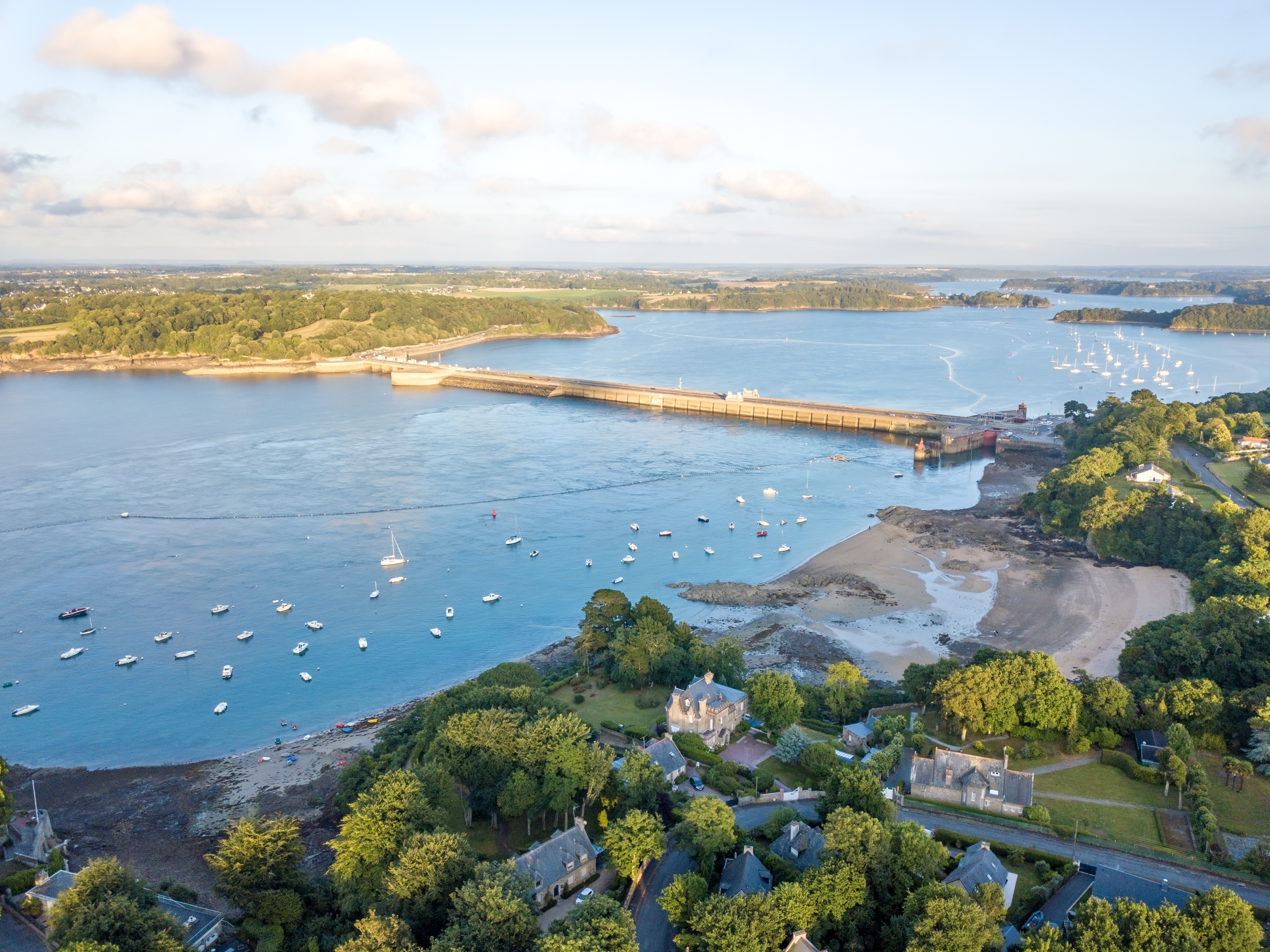Tidal energy is electric power generated from the changing of the tides. It is a form of alternative, renewable energy. Tidal forces from the gravitational pull of the moon and sun cause the levels of Earth’s oceans to rise and fall in predictable patterns. Electric generators can capture the resulting motion of the water and harness it to produce energy. Tidal energy may be considered a special type of hydroelectric power, electric energy generated using the motion of falling or flowing water. 
Types of tidal generators
Tidal motions can be harnessed to produce electric power in several ways. They include (1) tidal barrages and lagoons, (2) tidal turbines, and (3) dynamic tidal power.
Tidal barrages and lagoons
function in much the same way as hydroelectric dams. A barrage (large barrier) is built across a bay or other body of water. During high tide, openings called sluice gates allow water to flow through turbines and into the barrage. Turbines are devices that turn the flow of a moving fluid—in this case the water—into electric current. During low tide, the water flows from the barrage back out into the body of water. 
Tidal barrages provide a source of renewable energy. But they can cause environmental problems. Tidal barrages are built across the estuaries of rivers. An estuary is a coastal river valley flooded by an ocean. Estuaries provide habitat for many unique species of animals and plants. These habitats absorb floodwaters and naturally filter some water pollutants. Barrages can disrupt such estuarine habitats by interfering with water flow. They also block the migration of diadromous fish, fish such as salmon that live part of their lives in salt water and part in fresh water.
Tidal lagoons also trap tide waters for use in generating electric power, However, tidal lagoons can be constructed anywhere along a coastline. Engineers can position them to maximize potential energy generation and minimize construction costs and environmental harm. A tidal lagoon works much like a tidal barrage, admitting water through a barrier and using its flow to power turbines.
Tidal barrages and lagoons can generate electricity up to four times a day, as water flows in and out with the tides. If the barrage or tidal lagoon is large enough and the tidal energy strong enough, a tidal energy facility can produce electricity continuously. Engineers design the facility such that each discharging cycle takes roughly six hours. The cycles are timed so that one outflow phase leads directly into the next inflow phase and vice versa, with power being generated in both directions.
Tidal turbines
work much like underwater versions of wind turbines. In some bays and river mouths, water flows with a swift current during changes in the tide. During high tide, water turns the blades of the tidal turbine. As the flow reverses at low tide, the current turns the blades in the opposite direction. 
Tidal turbines can be mounted on floating platforms or anchored in the seabed. Turbines on floating platforms are much easier to install and service, but they present a barrier to seagoing vessels. Both floating and anchored tidal turbines pose a risk of blade strikes to dolphins, whales, and fish.
Dynamic tidal power
is a proposed tidal energy technology that involves the construction of an extremely long, open-ended pier out from a shore. As tides come in, water should build up on one side of the seawall more quickly than the other. Generators positioned along the seawall would capture energy from water flowing through. If placed properly, such a seawall would not hinder ship traffic or cause significant ecological damage. However, it would have to be many miles or kilometers long to be effective.
History
Tidal power has been used for about 1,000 years to grind grain. People built a dam to hold water from high tides. Then, they ran the water over a water wheel, which turned a grindstone. The first electrical tidal power plant opened in 1966. The La Rance Tidal Barrage is stationed on the north coast of France and generates 240 megawatts of power each day. Loading the player...
Water wheel
Locating tidal power generators
On average, sea levels change by about 3 feet (1 meter) due to tides. But the size of tides in a particular area is dependent upon the geography of the shoreline and the local seabed. Scientists called physical oceanographers study tides. They identify areas where the tides are strong enough to efficiently operate tidal power generators. They may work with engineers and marine biologists to maximize the energy output and minimize the environmental damage of a potential tidal power plant.
Potential
Few tidal power generators are in operation today. But, tidal energy could help to reduce people’s dependence on fossil fuels, helping to fight global warming. The predictability of tides makes tidal power a good complement to wind power and solar power, which depend on more variable conditions.
Tidal energy has great potential for remote islands with small populations. Such islands cannot host dedicated power plants, so people must run diesel generators for electricity. The high cost of importing diesel fuel makes experimental tidal power competitive in these markets. Small tidal generators could reduce these communities’ dependence on diesel generators.
